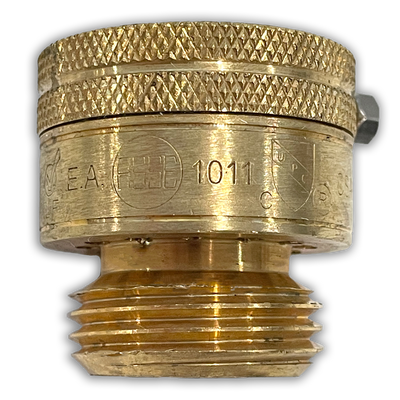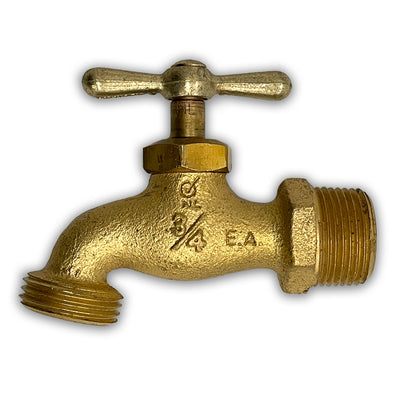Essential Hygiene: Hands-Free Valves for Hospitals
The Importance of Foot Operated Valves and Hands-Free Sensor Faucets in Hospitals
In healthcare settings, maintaining the highest standards of hygiene is crucial. Hospitals are environments where the spread of infections must be minimized, and every possible measure to reduce contamination is essential. One of the most effective ways to enhance hygiene in hospitals is through the use of foot operated valves for sinks and hands-free sensor faucets. These technologies play a vital role in preventing the spread of germs and ensuring the safety of both patients and healthcare workers.
The Hygiene Challenges in Hospitals
1. High Risk of Cross-Contamination
Hospitals are high-traffic areas where healthcare professionals, patients, and visitors are constantly in motion. With so many people interacting with surfaces, the risk of cross-contamination is significant. Traditional faucets, which require manual operation, can easily become breeding grounds for germs. Each time someone touches a faucet handle, they leave behind bacteria and viruses, which can then be picked up by the next person who uses it.
2. The Need for Sterile Environments
In areas like operating rooms, intensive care units, and patient wards, maintaining a sterile environment is critical. Any breach in hygiene can lead to serious infections, particularly in patients with compromised immune systems. Ensuring that handwashing facilities are as hygienic as possible is a fundamental part of infection control in hospitals.
The Advantages of Foot Operated Valves
Foot operated valves are an excellent solution for reducing the risk of contamination in hospital sinks. These valves allow users to control the water flow without touching any surfaces, significantly reducing the chances of spreading germs.
1. Hands-Free Operation
The primary advantage of foot operated valves is that they eliminate the need for hand contact with faucet handles. Healthcare workers can easily turn the water on and off using a foot pedal, leaving their hands free for other tasks. This hands-free operation is especially important in sterile environments where minimizing hand contact with surfaces is essential.
2. Enhanced Hygiene
By removing the need to touch faucet handles, foot operated valves help to maintain a higher level of cleanliness at sink stations. This reduces the risk of cross-contamination between users, making these valves ideal for areas like surgical suites and patient care rooms.
3. Convenience and Efficiency
Foot operated valves are not only hygienic but also convenient. Healthcare professionals can easily operate the sink without interrupting their workflow, which is particularly beneficial in fast-paced environments where time is of the essence. Additionally, these valves are durable and designed for frequent use, ensuring they can withstand the demands of a busy hospital.
The Benefits of Hands-Free Sensor Faucets
Hands-free sensor faucets offer another layer of protection against contamination in hospital settings. These faucets use motion sensors to detect when hands are placed under the spout, automatically activating the water flow without the need for physical contact.
1. Touchless Operation
Like foot operated valves, sensor faucets eliminate the need for touching faucet handles, thereby reducing the risk of spreading germs. The touchless operation is particularly beneficial in public areas of the hospital, such as restrooms and common areas, where large numbers of people use the facilities.
2. Water Conservation
Sensor faucets are also highly efficient in conserving water. The faucet automatically shuts off when hands are removed, preventing water from being left running accidentally. This not only helps the environment but also reduces utility costs for the hospital.
3. Customizable Settings
Many sensor faucets come with customizable settings for water temperature and flow duration, allowing hospitals to tailor the system to their specific needs. This ensures that the faucets are both comfortable and efficient for users.
4. Easy Maintenance
Sensor faucets are typically easy to maintain, with fewer mechanical parts that can wear out over time. This makes them a reliable choice for hospitals, where equipment needs to function smoothly and consistently.
King Supply’s Solutions for Hospital Hygiene
At King Supply, we understand the critical importance of maintaining hygiene in hospital settings. That’s why we offer a range of foot operated valves and hands-free sensor faucets designed specifically for healthcare environments. Our products are built to the highest standards, ensuring they meet the rigorous demands of hospital use.
- Durable and Reliable: Our foot operated valves and sensor faucets are made from high-quality materials, designed to withstand heavy use and provide long-lasting performance in any hospital setting.
- Easy to Install: Both our foot operated valves and sensor faucets are designed for easy installation, minimizing downtime and disruption to hospital operations.
- Cost-Effective: In addition to promoting hygiene, our products are also cost-effective, helping hospitals reduce water usage and maintenance costs over time.
Conclusion
In hospitals, where hygiene is paramount, foot operated valves and hands-free sensor faucets are essential tools for preventing the spread of infections. These technologies offer a touchless, efficient way to maintain cleanliness, ensuring the safety of both patients and healthcare professionals. By investing in these advanced solutions, hospitals can enhance their infection control measures, promote better health outcomes, and create a safer environment for everyone.
King Supply is committed to providing the highest quality hygiene solutions for hospitals. Our foot operated valves and sensor faucets are designed with the needs of healthcare facilities in mind, offering the perfect combination of durability, efficiency, and hygiene. Bulk wholesale pricing is available, making King Supply the ideal partner for outfitting your hospital with the best in hygiene technology.
In healthcare settings, maintaining the highest standards of hygiene is crucial. Hospitals are environments where the spread of infections must be minimized, and every possible measure to reduce contamination is essential. One of the most effective ways to enhance hygiene in hospitals is through the use of foot operated valves for sinks and hands-free sensor faucets. These technologies play a vital role in preventing the spread of germs and ensuring the safety of both patients and healthcare workers.
The Hygiene Challenges in Hospitals
1. High Risk of Cross-Contamination
Hospitals are high-traffic areas where healthcare professionals, patients, and visitors are constantly in motion. With so many people interacting with surfaces, the risk of cross-contamination is significant. Traditional faucets, which require manual operation, can easily become breeding grounds for germs. Each time someone touches a faucet handle, they leave behind bacteria and viruses, which can then be picked up by the next person who uses it.
2. The Need for Sterile Environments
In areas like operating rooms, intensive care units, and patient wards, maintaining a sterile environment is critical. Any breach in hygiene can lead to serious infections, particularly in patients with compromised immune systems. Ensuring that handwashing facilities are as hygienic as possible is a fundamental part of infection control in hospitals.
The Advantages of Foot Operated Valves
Foot operated valves are an excellent solution for reducing the risk of contamination in hospital sinks. These valves allow users to control the water flow without touching any surfaces, significantly reducing the chances of spreading germs.
1. Hands-Free Operation
The primary advantage of foot operated valves is that they eliminate the need for hand contact with faucet handles. Healthcare workers can easily turn the water on and off using a foot pedal, leaving their hands free for other tasks. This hands-free operation is especially important in sterile environments where minimizing hand contact with surfaces is essential.
2. Enhanced Hygiene
By removing the need to touch faucet handles, foot operated valves help to maintain a higher level of cleanliness at sink stations. This reduces the risk of cross-contamination between users, making these valves ideal for areas like surgical suites and patient care rooms.
3. Convenience and Efficiency
Foot operated valves are not only hygienic but also convenient. Healthcare professionals can easily operate the sink without interrupting their workflow, which is particularly beneficial in fast-paced environments where time is of the essence. Additionally, these valves are durable and designed for frequent use, ensuring they can withstand the demands of a busy hospital.
The Benefits of Hands-Free Sensor Faucets
Hands-free sensor faucets offer another layer of protection against contamination in hospital settings. These faucets use motion sensors to detect when hands are placed under the spout, automatically activating the water flow without the need for physical contact.
1. Touchless Operation
Like foot operated valves, sensor faucets eliminate the need for touching faucet handles, thereby reducing the risk of spreading germs. The touchless operation is particularly beneficial in public areas of the hospital, such as restrooms and common areas, where large numbers of people use the facilities.
2. Water Conservation
Sensor faucets are also highly efficient in conserving water. The faucet automatically shuts off when hands are removed, preventing water from being left running accidentally. This not only helps the environment but also reduces utility costs for the hospital.
3. Customizable Settings
Many sensor faucets come with customizable settings for water temperature and flow duration, allowing hospitals to tailor the system to their specific needs. This ensures that the faucets are both comfortable and efficient for users.
4. Easy Maintenance
Sensor faucets are typically easy to maintain, with fewer mechanical parts that can wear out over time. This makes them a reliable choice for hospitals, where equipment needs to function smoothly and consistently.
King Supply’s Solutions for Hospital Hygiene
At King Supply, we understand the critical importance of maintaining hygiene in hospital settings. That’s why we offer a range of foot operated valves and hands-free sensor faucets designed specifically for healthcare environments. Our products are built to the highest standards, ensuring they meet the rigorous demands of hospital use.
- Durable and Reliable: Our foot operated valves and sensor faucets are made from high-quality materials, designed to withstand heavy use and provide long-lasting performance in any hospital setting.
- Easy to Install: Both our foot operated valves and sensor faucets are designed for easy installation, minimizing downtime and disruption to hospital operations.
- Cost-Effective: In addition to promoting hygiene, our products are also cost-effective, helping hospitals reduce water usage and maintenance costs over time.
Conclusion
In hospitals, where hygiene is paramount, foot operated valves and hands-free sensor faucets are essential tools for preventing the spread of infections. These technologies offer a touchless, efficient way to maintain cleanliness, ensuring the safety of both patients and healthcare professionals. By investing in these advanced solutions, hospitals can enhance their infection control measures, promote better health outcomes, and create a safer environment for everyone.
King Supply is committed to providing the highest quality hygiene solutions for hospitals. Our foot operated valves and sensor faucets are designed with the needs of healthcare facilities in mind, offering the perfect combination of durability, efficiency, and hygiene. Bulk wholesale pricing is available, making King Supply the ideal partner for outfitting your hospital with the best in hygiene technology.




